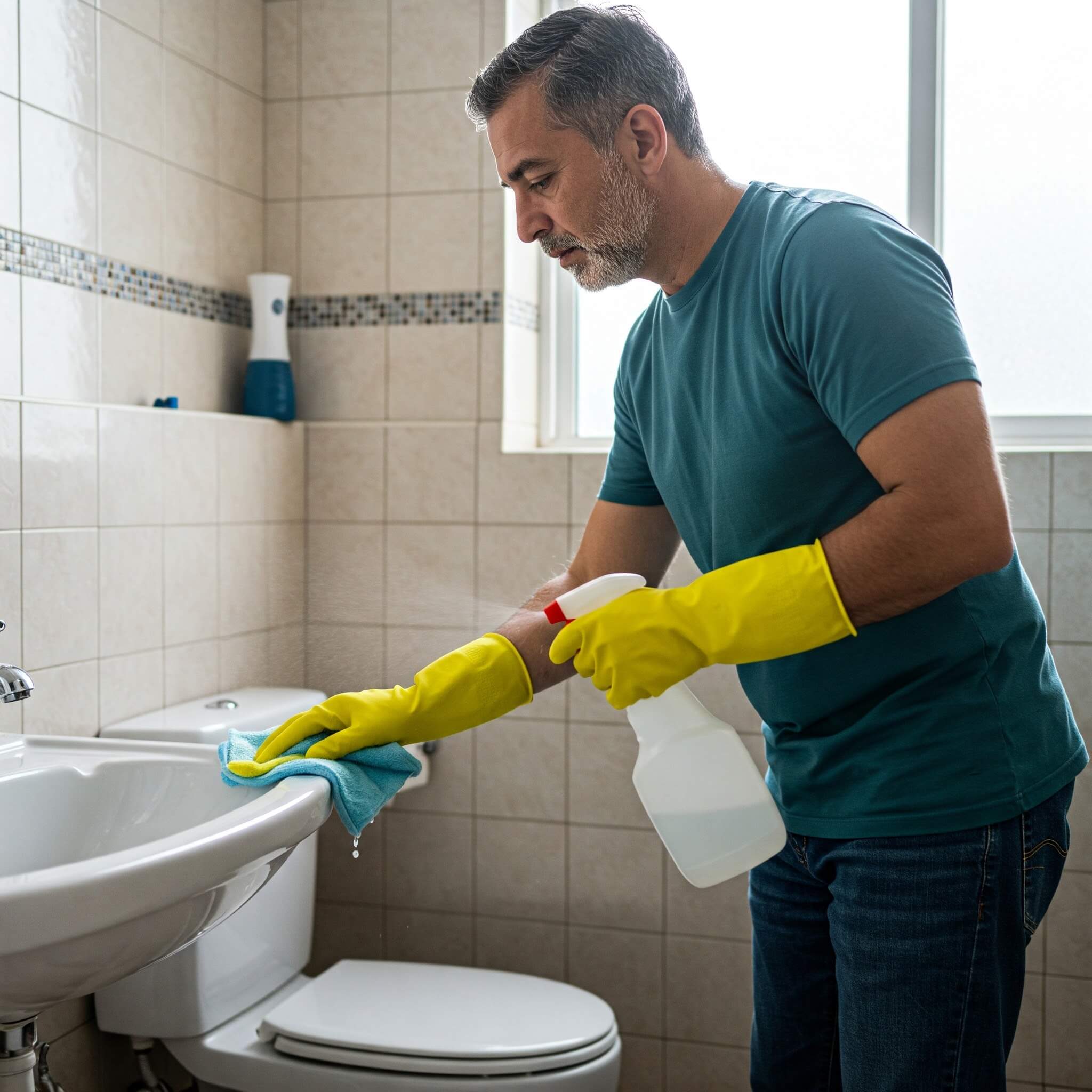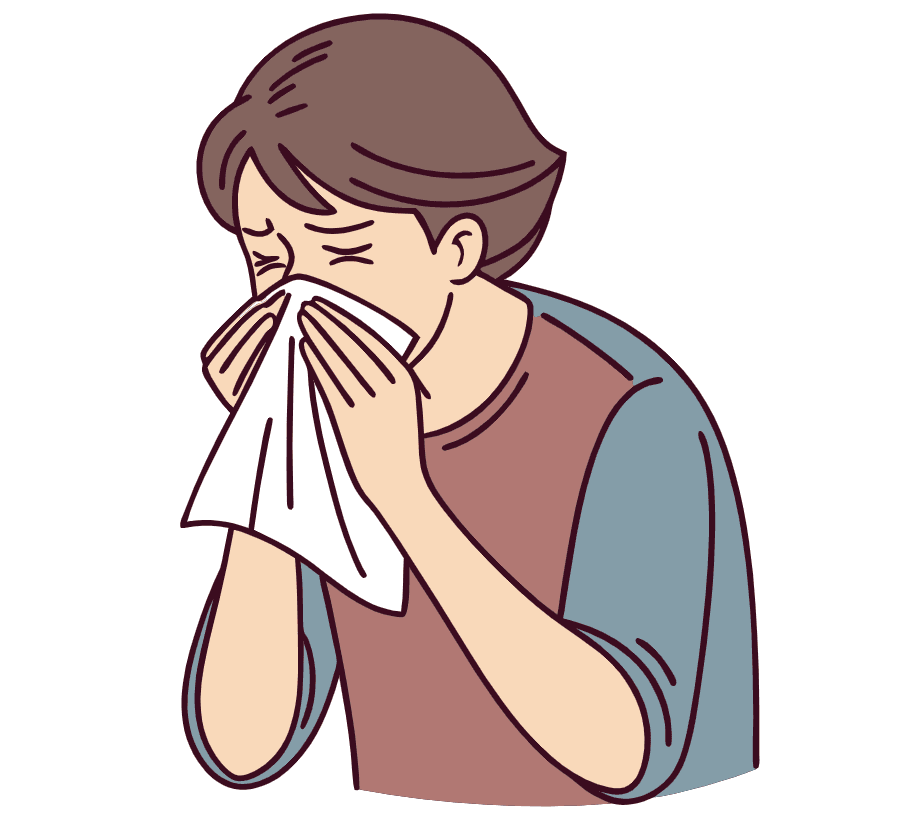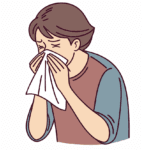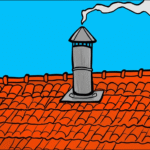
Table Of Content
- 🚿 What Are Those Pink Stains in Your Shower?
- 🦠 Why Does Pink Mold Appear in Bathrooms?
- ⚠️ Health Risks: Is Pink Mold Dangerous?
- 🧼 5 Effective Methods to Remove Pink Mold from Shower
- 1. Vinegar and Baking Soda Solution
- 2. Bleach Solution for Tough Pink Mold Stains
- 3. Hydrogen Peroxide Treatment
- 4. Commercial Bathroom Cleaners
- 5. Regular White Vinegar Spray
- 🚽 Prevention Tips: Keep Pink Mold from Coming Back
- Control Bathroom Moisture
- Regular Cleaning Routine
- Smart Bathroom Habits
- Replace Bathroom Items Regularly
- 📝 Conclusion: A Healthy, Pink Mold-Free Bathroom
Key takeaways:
- Pink mold in your bathroom is caused by bacteria called Serratia marcescens, not actual mold
- These bacteria can cause health problems, especially for people with weak immune systems
- The bacteria spread through the air when you shower with hot water
- You can remove pink mold stains with common household items like vinegar, bleach, or hydrogen peroxide
- Keeping your bathroom dry and clean helps prevent pink mold from coming back
🚿 What Are Those Pink Stains in Your Shower?
Have you noticed pink or reddish stains in your bathroom? They might show up around the toilet, in shower corners, or near your sink drain. Many think they’re just soap scum or harmless mold. I used to think the same, wiping them away only to see them return days later.
The truth is more concerning. Those pink stains in shower aren’t mold at all – they’re colonies of bacteria called Serratia marcescens. This bacteria produces a reddish-pink pigment that gives it its distinctive color. Knowing what these pink mold stains really are is the first step to getting rid of them for good and protecting your family’s health.
🦠 Why Does Pink Mold Appear in Bathrooms?
Serratia marcescens thrives in moist, humid environments – making your bathroom the perfect home. These bacteria love damp areas and grow well on soap, shampoo, and toothpaste residue. Think of your bathroom as an all-you-can-eat buffet for these tiny organisms!
The bacteria create a “biofilm” – a protective layer that helps them stick to surfaces and resist regular cleaning. This is why simply wiping the pink stains away doesn’t solve the problem long-term. The pink color you see is actually a pigment called prodigiosin that the bacteria produce.
You’ll most commonly find pink mold:
- Around the water line in toilet bowls
- In shower corners and on shower curtains
- Around sink and shower drain areas
- On damp grout lines between tiles
- On bathroom fixtures that stay wet
Your bathroom creates the perfect storm of conditions: warmth, moisture, and food sources from personal care products. No wonder this pink stuff in shower keeps coming back!
⚠️ Health Risks: Is Pink Mold Dangerous?
While pink mold might seem like just an annoying cleaning problem, it can actually pose health risks. According to plumbing expert Peter Jones, “Serratia marcescens can cause respiratory problems and urinary tract infections in humans.”
The bacteria are what scientists call “opportunistic pathogens.” This means they typically don’t cause problems for healthy people but can lead to infections in people with weakened immune systems. Those at higher risk include:
- Elderly people
- Young children
- People recovering from illness or surgery
- Anyone with a compromised immune system
What makes pink mold concerning is how it can spread. When you take a hot shower, the bacteria can mix with water droplets in the air. As Jones explains, “When showering with hot water, the bacteria can mix with tiny particles in the air and be inhaled without one realizing it, which is very bad for respiratory health.”
Over time, breathing in these bacteria can lead to respiratory problems. The bacteria can also cause infections if they enter through:
- Open cuts or wounds
- Eyes (causing conjunctivitis)
- Urinary tract
This isn’t meant to scare you, but to highlight why addressing pink mold promptly is important for your family’s wellbeing. The good news is that removing and preventing it is fairly simple with the right approach.
🧼 5 Effective Methods to Remove Pink Mold from Shower
Ready to say goodbye to pink mold? Here are five proven methods that use items you probably already have at home:
1. Vinegar and Baking Soda Solution
This natural cleaning duo works wonderfully on pink mold and is gentle on most bathroom surfaces.
How to clean pink mold:
- Sprinkle baking soda directly on the stained areas
- Spray white vinegar onto the baking soda
- Let it fizz and bubble for 5-10 minutes
- Scrub gently with a scrub brush or sponge
- Rinse thoroughly with clean water
This method works well on porcelain and ceramic surfaces like toilets and sinks. The acidic vinegar breaks down the bacterial biofilm. The baking soda provides gentle scrubbing power.
2. Bleach Solution for Tough Pink Mold Stains
For stubborn pink mold, bleach can be very effective.
How to use it:
- Mix 1 part bleach with 10 parts water in a spray bottle
- Spray directly on the stained areas
- Let sit for 10 minutes (no longer to avoid damaging surfaces)
- Scrub if needed with a brush
- Rinse thoroughly with water
Safety tips: Always wear protective gear like gloves when working with bleach. Ensure good bathroom ventilation. Never mix bleach with other cleaning products (like vinegar or ammonia).
3. Hydrogen Peroxide Treatment
Hydrogen peroxide is less harsh than bleach but effective against pink bacteria in shower.
How to use it:
- Pour 3% hydrogen peroxide directly onto the stained area
- Let it sit for 10-15 minutes
- Wipe or gently scrub the area
- Rinse with clean water
This method is great for shower curtains. Simply spray them with hydrogen peroxide before washing.
4. Commercial Bathroom Cleaners
Many store-bought bathroom cleaners are made to tackle bacteria and mold.
How to use them:
- Choose a product that mentions mold, mildew, or bacteria control
- Apply according to the package directions
- Allow proper contact time (usually 5-10 minutes)
- Rinse thoroughly
For best results, look for products with quaternary ammonium compounds or other antibacterial ingredients that kill pink mold.
5. Regular White Vinegar Spray
For mild pink mold or as a preventive measure, plain white vinegar works well.
How to use it:
- Fill a spray bottle with undiluted white vinegar
- Spray directly on affected areas
- Let sit for 10 minutes
- Wipe clean or rinse with water
This method is useful for regular maintenance to prevent pink mold from returning. Does vinegar kill pink mold? Yes, it’s effective against Serratia marcescens when used regularly.
🚽 Prevention Tips: Keep Pink Mold from Coming Back
Removing pink mold is only half the battle. Keeping it from returning is equally important. Bacteria thrive in moist environments, so controlling moisture is key.
Control Bathroom Moisture
The less moisture in your bathroom, the less welcoming it is for pink mold:
- Turn on the bathroom exhaust fan during and for 20 minutes after showering
- Open windows when possible to improve air circulation
- Use a squeegee on shower walls after each use
- Keep towels handy to wipe down wet surfaces
- Consider using a dehumidifier in your bathroom
Regular Cleaning Routine
Prevention is easier than removal:
- Wipe down bathroom surfaces with a disinfectant spray weekly
- Clean showers and tubs weekly with an antibacterial bathroom cleaner
- Wash shower curtains and bath mats regularly
- Use daily shower sprays to prevent soap scum build-up and pink mold growth
Smart Bathroom Habits
Small changes in your bathroom habits can make a big difference:
- Store shampoo bottles and soap on a rack that drains
- Fix any leaky faucets or pipes
- Consider using shower products with fewer additives
- Leave shower doors slightly open when not in use
Replace Bathroom Items Regularly
Some things just need to be replaced periodically:
- Change your shower curtain liner every 3-6 months
- Replace bathroom cleaning tools like sponges and brushes regularly
- Consider antimicrobial shower curtains and bath mats to prevent pink mold on towels and other fabrics
📝 Conclusion: A Healthy, Pink Mold-Free Bathroom
Pink mold in your bathroom isn’t just ugly. It’s a sign of harmful bacteria. But don’t worry, you now know how to get rid of Serratia marcescens and keep your bathroom clean and healthy with a few simple steps.
Keeping your bathroom dry is key to preventing pink mold. A dry bathroom doesn’t welcome harmful bacteria. By following these tips for moisture control and regular cleaning, you’ll have a cleaner and more hygienic bathroom.
Have you fought pink mold in your bathroom? What method worked best for you? Next time you see pink streaks or slime in shower, you’ll know exactly how to tackle them and maintain a pink mold-free environment!
Please share this article if you like it!









